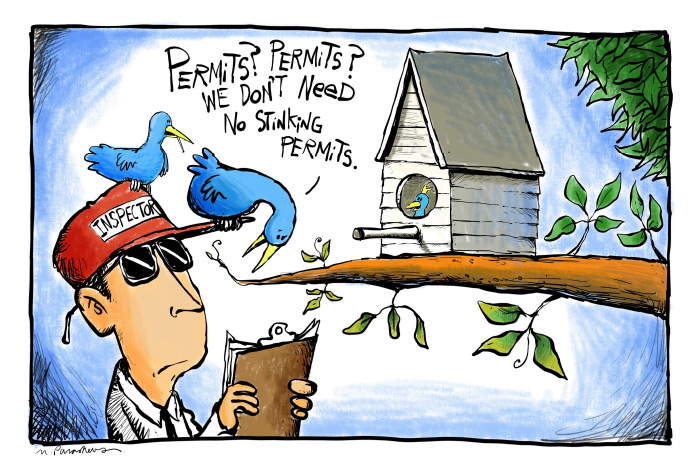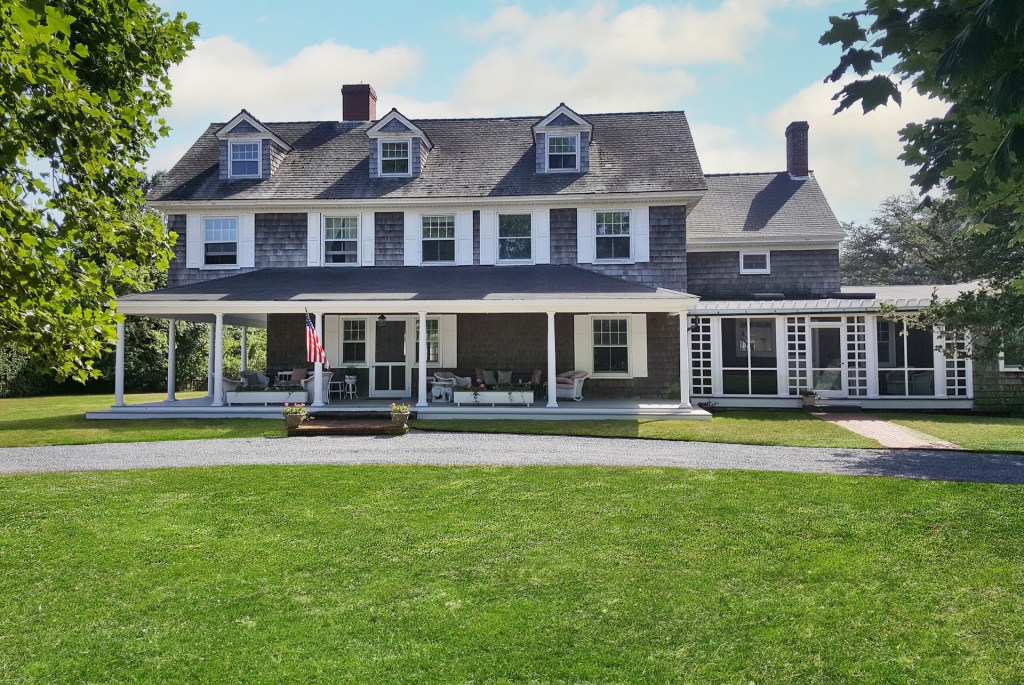Tree House Begone! Read the Rules and Get a Permit to Build in the Hamptons

A woman named Jean Kerr wrote a book that became famous years ago called Please Don’t Eat the Daisies. That phrase became a national slogan for a while, confirming the fact that, as time goes by, bureaucrats find more and more things going on to write laws about that hadn’t been written about before. In the book, a two-year-old child wanders onto the grass in a park and eats a daisy. Two weeks later a small sign is up. It reads “Please Don’t Eat the Daisies.”
I bring this up because when my kids were little here in the Hamptons, I built them a tree house in our backyard. There were no rules and regulations about tree houses then. I put a platform and a peaked roof up there with a ladder stairs nailed into the tree. The town had no problem with that. I also wanted to place a small a gazebo at the top of the property. We live on a hillside with a great view. But it turned out that just before I hoped to do that, the town had passed laws prohibiting gazebos without a permit. Even if they were free-standing and moveable, you couldn’t build them without one.
I was startled by that, and, determined to do something to allow people to enjoy the view, thought of something else that would work that might escape the town’s attention. More about that later.
Now, it turns out, the Town, actually East Hampton Village, has laws about tree houses. Mariska Hargitay, the well known star of the TV show Law and Order: SVU, has one in her backyard. She and her husband, Peter Hermann, are now raising kids on this property on Cottage Avenue.
The existence of the tree house came to the attention of the Village Board because the couple wanted to get zoning variance approval for some other structures in their backyard, the East Hampton Star reports.
Their lawyer, Michael Hammer, commenting on the tree house when it was challenged, said he thought it was very unlikely the couple would have known there were laws pertaining to tree houses. But, of course, ignorance of a law is no excuse.
The tree house was denied a permit. In denying it, Frank Newbold, the chairman of the Zoning Board of Appeals, noted that the tree house is just 7.2 feet away from a small apartment on a neighbor’s property. It was therefore in violation of the pyramid law. And it had a ceiling height greater than 14 feet, the maximum allowed for a tree house.
He also noted that, although there were not many other trees in the backyard, there was at least one tree that he felt could legally accommodate a tree house, provided, of course, that the ceiling were lowered.
Another board member, Lys Marigold, noted that, in the plan, you could look through the window of another accessory structure already built and see there were two beds in it. Accessory structures, such as tool sheds, art studios and now tree houses, are not permitted to be slept in.
“Remind your clients of what’s in their C.O.” she told Mr. Hammer.
I’ve been thinking of what new tree house regulations might lie down the road. Here’s what I have come up with:
Tree houses must be no larger than the cubic feet of the eldest child who will be using it. (Thus, you could build small and add on as they grow.)
The roof of all tree houses must be built with birdfeeders atop their roofs. This would make up for the intrusion in the part of the tree that birds ordinarily would call theirs and help save endangered species.
No tree shall be damaged in any way by the building of a tree house. No nails, no screws, no boughs sawn off. Tree houses can be set into the boughs of a tree with hooks or clamps. But the clamps must not be too tight. That would hurt the tree.
The platform floor of a tree house must be built no higher than twice the height of the youngest child who intends to use it. (Again, as the kids grow, the tree house can be jacked up.)
If access to a tree house is to be by rope only, the thickness of the rope must be no less than 1/10 the circumference waist measurement of the youngest child using it.
The interior ceilings of all tree houses must be covered with padding so those visiting do not bang their heads.
All tree houses must be equipped with approved shock absorbers to soften the swaying caused by the wind. They also must have railings all around.
Tree houses, because they are allowed to be built with less permanent materials, are given certificate of occupancies good for only one year. An annual tree house inspection can lead to a re-issue.
All tree houses must be equipped with interior surveillance cameras so that no hanky–panky sort of behavior can go on there, particularly by consenting adults after the kids are asleep. Copies of surveillance tape must be presented to the Village weekly.
Dogs are not permitted in tree houses. Cats are permitted, but not encouraged.
And please don’t eat the daisies.
* * *
Okay, so here’s what happened with my tree house. It lasted two summers and my four kids loved it while it was there.
In August of the second summer, however, this was in 1992, a tornado ripped through the eastern end of Long Island. This is the only tornado that ever came through the East End in my lifetime, that I know of, although it was later downgraded to a “water spout” by an unconvinced weather service.
The tornado apparently birthed in the Connecticut Valley around midnight, crossed over Long Island Sound, gathered steam and made a powerful new landfall onto the property of the Three Mile Harbor Marina across from my house, ripping the corrugated roof of one of the big buildings there completely off and it was gone and never found. It also tore off the top of my chimney, then took up my tree house and flew off with it. We never saw it again. The tornado made another landfall in Bridgehampton just west of the monument, roared up Main Street heading west, knocked down trees, destroyed the glass enclosed annex building of Thayer Hardware and then lifted off just 100 yards shy of where the Dan’s Papers office was on Main Street at that time, just west of Butter and Halsey Lane.
I decided not to rebuild the tree house.
Instead of my proposed gazebo, I had a contractor dig a small 10-foot-long notch in the hillside near the top of the hill and build, or apparently “uncover” a small stone wall that seems to have been underground there. One flat stone in this wall sticks out far enough so two or three people could sit upon it.
That “ruin” (with its stone seat) remains there to this day. Nothing the Town can do about it. But we don’t sit on it. The first sunny day I went up there to sit and contemplate the view, I found that a garden snake had beat me too it. I crept back down to the house and never sat up there again.
Since then, walking around on the hill, I’ve noticed that the garden snakes now think this stone seat was built for them—I think they are a family—and so bask there. I think it is legal for a snake family to bask there. As long as they don’t exceed occupancy limits.



